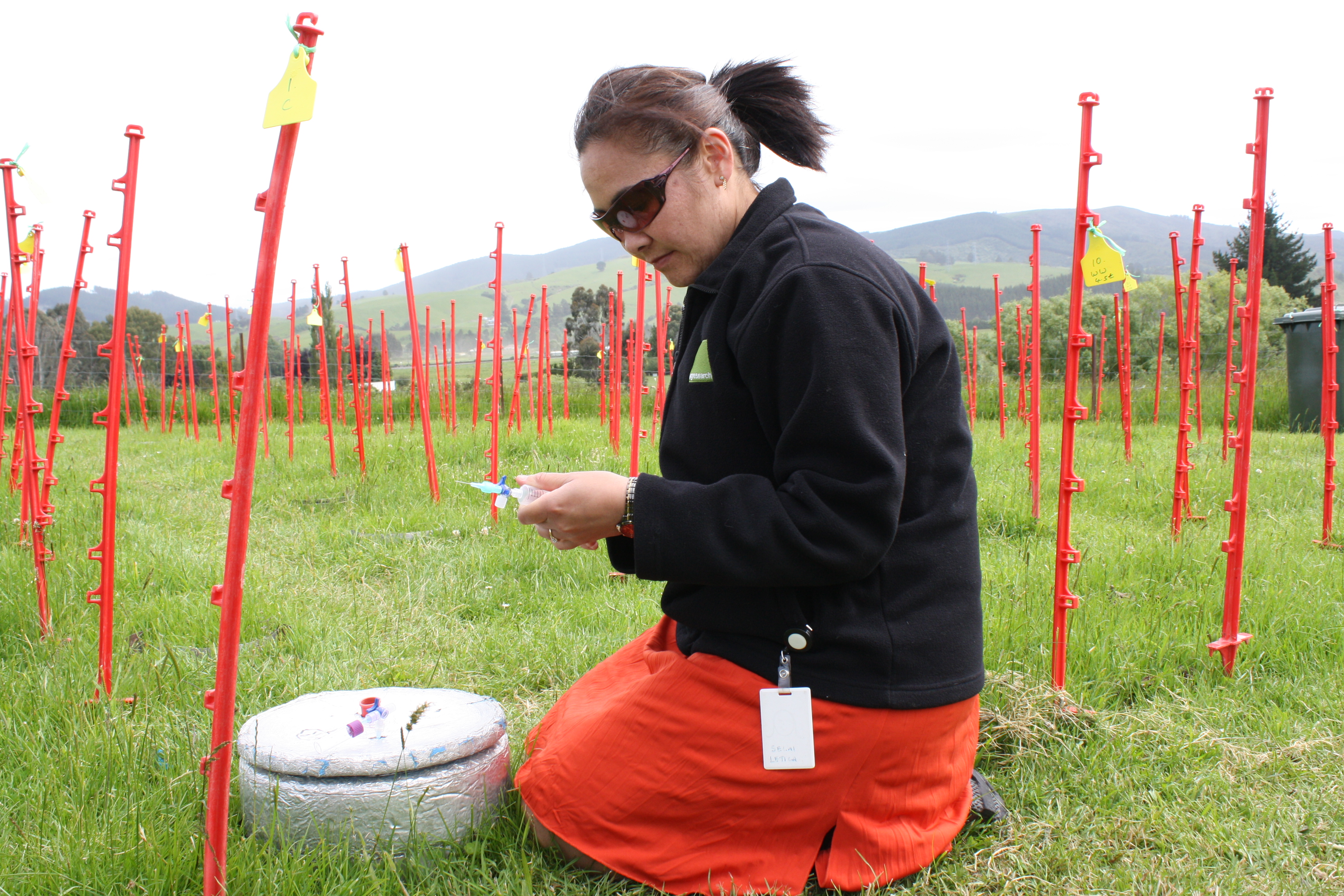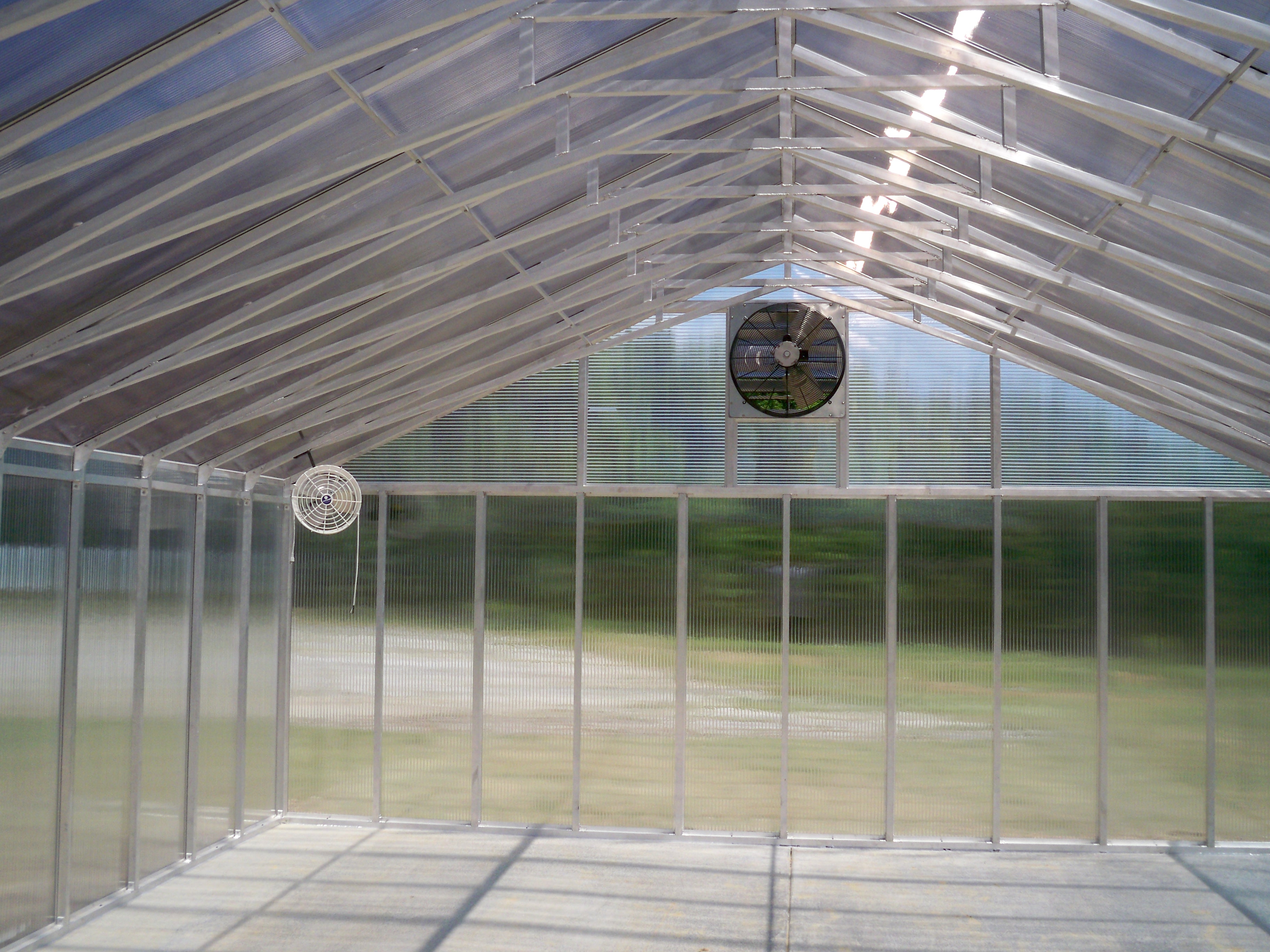Home>Gardening News and Trends>How To Measure Greenhouse Gas Emissions


Gardening News and Trends
How To Measure Greenhouse Gas Emissions
Modified: January 22, 2024
Stay up to date with the latest news on how to measure greenhouse gas emissions and contribute towards a greener future.
(Many of the links in this article redirect to a specific reviewed product. Your purchase of these products through affiliate links helps to generate commission for Chicagolandgardening.com, at no extra cost. Learn more)
Table of Contents
- Introduction
- Importance of Measuring Greenhouse Gas Emissions
- Different Methods of Measuring Greenhouse Gas Emissions
- Direct Emissions Measurement
- Indirect Emissions Measurement
- Commonly Used Measurement Tools and Devices
- Challenges in Measuring Greenhouse Gas Emissions
- Mitigation Strategies to Reduce Greenhouse Gas Emissions
- Conclusion
Introduction
Welcome to the world of greenhouse gas emissions measurement! As concerns about climate change and environmental sustainability continue to grow, accurately measuring greenhouse gas emissions has become a vital endeavor. Understanding the sources and levels of these emissions is crucial for developing effective strategies to mitigate their impact on the planet.
Greenhouse gases, such as carbon dioxide (CO2), methane (CH4), and nitrous oxide (N2O), trap heat in the Earth’s atmosphere, leading to the greenhouse effect and consequently causing global warming. To address this issue, it is crucial to accurately measure and monitor greenhouse gas emissions across various sectors, including energy production, transportation, agriculture, and industry.
The importance of measuring greenhouse gas emissions lies in its role as a fundamental step towards formulating evidence-based climate policies. Accurate data helps governments, organizations, and researchers identify major emission sources, set reduction targets, and evaluate the effectiveness of mitigation strategies. Such information is also crucial for developing carbon markets and trading systems, as well as for tracking the progress of international climate agreements.
Measuring greenhouse gas emissions encompasses quantifying direct emissions, which result from activities within a specific facility or sector, as well as indirect emissions, which are related to the consumption of goods and services. Direct emissions measurement involves monitoring emissions from stationary sources like power plants or mobile sources such as vehicles. Indirect emissions measurement, on the other hand, focuses on emissions associated with products and services throughout their lifecycle.
In this article, we will explore the various methods and tools used to measure greenhouse gas emissions. We will discuss both direct and indirect measurement techniques, as well as the challenges involved in obtaining accurate data. Additionally, we will examine the importance of developing effective strategies to mitigate greenhouse gas emissions, ensuring a sustainable and resilient future for the planet.
Importance of Measuring Greenhouse Gas Emissions
The accurate measurement of greenhouse gas emissions plays a crucial role in addressing climate change and creating a sustainable future. Let’s explore the importance of this practice in more detail.
First and foremost, measuring greenhouse gas emissions helps us understand the extent and sources of these gases in the atmosphere. By quantifying emissions from various sectors, such as energy production, transportation, and agriculture, we can identify the major contributors to global warming. This knowledge allows policymakers and researchers to prioritize their efforts and develop targeted strategies to reduce emissions in the most effective and efficient manner.
Furthermore, measuring greenhouse gas emissions provides us with a baseline to track our progress in reducing emissions. By establishing clear and measurable goals, we can assess the effectiveness of mitigation strategies and make adjustments as necessary. This data also enhances transparency and accountability in emission reduction efforts, as it allows us to validate the impact of our actions.
In addition, accurate measurement of greenhouse gas emissions is essential for the development of carbon markets and trading systems. These mechanisms enable organizations to trade emission allowances, creating financial incentives for reducing emissions. However, for these markets to function effectively, reliable and standardized measurement data is required. This ensures the integrity and fairness of the trading systems, allowing emissions to be reduced at the lowest cost.
Measuring greenhouse gas emissions also plays a crucial role in international climate agreements. Countries often make commitments to reduce their emissions under these agreements, such as the Paris Agreement. Accurate measurement data is necessary to track progress towards these commitments and to hold countries accountable for their actions. It enables comparisons between countries and supports international cooperation in addressing climate change.
Moreover, measuring greenhouse gas emissions helps us better understand the environmental impact of specific activities and products. It allows us to assess the carbon footprint associated with the production, use, and disposal of goods and services. This information enables consumers to make informed choices and encourages businesses to adopt more sustainable practices throughout their supply chains.
In summary, measuring greenhouse gas emissions is of utmost importance in our efforts to combat climate change and create a sustainable future. It provides crucial information for policy development, tracking progress, supporting carbon markets, fulfilling international commitments, and fostering sustainable practices. By accurately measuring and monitoring emissions, we can take informed actions to reduce greenhouse gas emissions and mitigate their impact on our planet and future generations.
Different Methods of Measuring Greenhouse Gas Emissions
Measuring greenhouse gas emissions involves a variety of methods and techniques, which can vary depending on the specific emission source and desired accuracy. Let’s explore some of the commonly used approaches for measuring these emissions.
1. Direct emissions measurement: Direct emissions are those that occur within a specific facility or sector. To measure direct emissions, various techniques are employed, including:
- Continuous Emission Monitoring Systems (CEMS): These systems utilize sensors and analyzers to measure the concentrations of greenhouse gases emitted from stationary sources, such as power plants and industrial facilities. CEMS provide real-time data and are often required for regulatory compliance.
- Emission Factor Estimation: This method involves multiplying activity data (e.g., fuel consumption) by an emission factor, which represents the average emissions associated with a specific activity or industry. Emission factors can be obtained from emission inventories or established databases.
- Mobile Measurement Platforms: For measuring emissions from mobile sources like vehicles, mobile measurement platforms equipped with gas analyzers and remote sensing technologies are used. These platforms can provide on-road measurements of emissions, allowing for more accurate assessment of real-world emissions.
2. Indirect emissions measurement: Indirect emissions are associated with the consumption of goods and services. Measuring these emissions involves considering the entire lifecycle of a product, from production to disposal. Common methods for measuring indirect emissions include:
- Life Cycle Assessment (LCA): LCA assesses the environmental impacts of a product throughout its lifecycle, including raw material extraction, manufacturing, use, and disposal. Greenhouse gas emissions throughout the lifecycle are quantified, enabling the identification of hotspots and opportunities for emission reduction.
- Input-Output Analysis: This approach involves tracing the flow of emissions through the supply chain. It quantifies both direct and indirect emissions associated with the production and consumption of goods and services at a national or sectoral level.
- Eco-labels and Product Certification: Eco-labeling programs and product certifications provide consumers with information about the environmental performance of the product. These labels often include information about the product’s carbon footprint, allowing consumers to make more sustainable choices.
It’s important to note that measuring greenhouse gas emissions can be challenging due to various factors, such as the complexity of emissions sources, the availability of data, and the need for accurate and standardized measurement techniques. Nonetheless, advancements in technology and methodologies continue to improve the accuracy and efficiency of measurements.
Overall, by employing different methods for measuring greenhouse gas emissions, we can gain a comprehensive understanding of the sources and levels of these gases. This knowledge enables us to develop targeted mitigation strategies and make informed decisions to reduce emissions and combat climate change.
Direct Emissions Measurement
Direct emissions measurement involves quantifying greenhouse gas emissions that occur within a specific facility or sector. Accurate measurement of these emissions is crucial for understanding and addressing their environmental impact. Let’s explore some of the commonly used techniques for direct emissions measurement.
1. Continuous Emission Monitoring Systems (CEMS): CEMS are widely used for measuring emissions from stationary sources, such as power plants and industrial facilities. These systems employ sensors and analyzers to continuously monitor the concentrations of greenhouse gases, providing real-time data. CEMS play a vital role in regulatory compliance and enable facilities to track their emissions and ensure they meet emissions standards.
2. Emission Factor Estimation: This method involves multiplying activity data, such as fuel consumption or production output, by an emission factor. Emission factors represent the average emissions associated with specific activities or industries. They can be obtained from emission inventories, industry benchmarks, or established databases. Emission factor estimation is often used when direct measurements are not feasible or to supplement monitoring data.
3. Mobile Measurement Platforms: Mobile measurement platforms are utilized for measuring emissions from mobile sources, including vehicles and equipment. These platforms are equipped with gas analyzers and remote sensing technologies, allowing for on-road measurements of emissions. Mobile measurements provide a more accurate assessment of real-world emissions, aiding in the development and evaluation of vehicle emission standards and emission reduction strategies.
4. Inventory Reporting: Industries and facilities are often required to report their greenhouse gas emissions through inventory reporting. This involves collecting and reporting data on emissions from various sources within a facility, such as combustion processes, chemical reactions, and fugitive emissions. Inventory reporting helps in tracking emissions over time, identifying emission trends, and assessing the effectiveness of emission reduction measures.
These direct emissions measurement techniques provide valuable insights into the sources and quantities of greenhouse gas emissions. They enable facilities, industries, and governments to track their emissions, identify opportunities for improvement, and implement effective mitigation strategies.
It is important to note that direct emissions measurement can face challenges. These challenges include the complexity of emissions sources, the need for accurate and standardized measurement techniques, and ensuring data quality and reliability. Additionally, the cost and technical requirements of continuous monitoring systems or mobile measurement platforms can be limiting factors for some organizations.
Nevertheless, technological advancements and a growing understanding of greenhouse gas emissions are continuously improving the accuracy and accessibility of direct emissions measurement. This information provides a foundation for effective emissions management, environmental stewardship, and the development of sustainable practices to mitigate climate change.
Indirect Emissions Measurement
Indirect emissions measurement involves quantifying greenhouse gas emissions that are associated with the consumption of goods and services. These emissions occur throughout the entire lifecycle of a product, from production to disposal. Accurately measuring indirect emissions is essential for understanding the environmental impact of our consumption patterns and identifying areas for improvement. Let’s explore some of the commonly used techniques for indirect emissions measurement.
1. Life Cycle Assessment (LCA): LCA is a comprehensive method that assesses the environmental impact of a product throughout its entire lifecycle. This includes raw material extraction, manufacturing, transportation, use, and disposal. LCA quantifies the greenhouse gas emissions at each stage and identifies hotspots where emissions are the highest. The results can be used to reduce the carbon footprint of a product by making design changes, optimizing manufacturing processes, and improving end-of-life management.
2. Input-Output Analysis: Input-Output Analysis traces the flow of emissions in an economy and quantifies both direct and indirect emissions associated with the production and consumption of goods and services. It captures the interconnectedness between industries and sectors, allowing us to understand the indirect emissions resulting from economic activities. Input-Output Analysis models can be used at national or sectoral levels to identify emission hotspots, evaluate the effectiveness of strategies, and inform policy decisions.
3. Eco-labels and Product Certification: Eco-labeling programs and product certifications provide consumers with information about the environmental performance of a product, including its greenhouse gas emissions. These labels often include information about the product’s carbon footprint or its emissions reduction compared to other alternatives. By providing transparent and standardized information, eco-labels and certifications empower consumers to make more sustainable choices and encourage businesses to adopt greener practices throughout their supply chain.
4. Carbon Accounting Tools: Carbon accounting tools are software applications that enable organizations to track, calculate, and report their greenhouse gas emissions. These tools streamline the measurement process by providing data management, emission factor libraries, and reporting functionalities. Carbon accounting tools help organizations set emission reduction targets, identify emission sources, and assess the impact of mitigation measures.
It is important to keep in mind that indirect emissions measurement can be challenging due to the complexity of global supply chains and the need for data collaboration between multiple stakeholders. Obtaining accurate and comprehensive data along the entire supply chain can be a complex task. However, efforts are being made to improve data availability, transparency, and standardization to enhance the accuracy and reliability of indirect emissions measurement.
By effectively measuring and managing indirect emissions, we can identify opportunities for emission reductions, drive sustainable consumption and production patterns, and create more environmentally-friendly supply chains. These efforts are essential for achieving our climate goals and transitioning to a low-carbon and sustainable future.
Commonly Used Measurement Tools and Devices
Measuring greenhouse gas emissions requires the use of various tools and devices to accurately quantify the levels of emissions. These tools help capture real-time data and provide insights into emission sources and trends. Let’s explore some of the commonly used measurement tools and devices in greenhouse gas emissions measurement.
1. Gas Analyzers: Gas analyzers are essential tools for directly measuring and analyzing the concentration of greenhouse gases in the atmosphere. They use sensors and detectors to detect specific gases such as carbon dioxide (CO2), methane (CH4), and nitrous oxide (N2O). Gas analyzers come in various forms, including portable handheld analyzers and continuous monitoring systems for stationary sources.
2. Remote Sensing Technologies: Remote sensing technologies, such as satellite-based sensors and aerial platforms, play a crucial role in measuring greenhouse gas emissions over large areas. These technologies detect and quantify greenhouse gases using spectral measurements and remote sensing techniques. Remote sensing enables the monitoring of emissions from various sources, such as power plants, oil and gas facilities, and agricultural areas.
3. Eddy Covariance Systems: Eddy covariance systems are used to measure the exchange of greenhouse gases between ecosystems or land surfaces and the atmosphere. These systems rely on the measurement of wind velocity, temperature, and concentration gradients to calculate the flux of greenhouse gases, such as CO2 and CH4. Eddy covariance systems are commonly deployed in research sites, forests, wetlands, and agricultural fields.
4. Portable Emission Measurement Systems (PEMS): PEMS are portable measurement devices used to quantify emissions from mobile sources such as vehicles and equipment. These systems are mounted on vehicles during on-road or in-use testing and measure real-time emissions. PEMS provide valuable data on vehicle emissions under real-world driving conditions and help assess the compliance of vehicles with emission standards.
5. Data Loggers: Data loggers are small electronic devices used to collect and record environmental data, including temperature, humidity, and gas concentrations. They are often used in controlled environments or at specific monitoring sites to gather continuous, reliable data over extended periods. Data loggers can be used in conjunction with gas analyzers to monitor emissions from various sources.
6. Emission Sampling Equipment: Emission sampling equipment is used to collect gas samples for laboratory analysis and to determine emission rates. Common equipment includes gas sampling bags, canisters, and sorbent tubes. These tools facilitate the collection and preservation of gas samples from exhaust stacks, flues, and other emission sources for accurate analysis in a controlled environment.
7. Mass Flow Meters and Flow Measuring Devices: Mass flow meters and flow measuring devices are used to measure the flow rate of gas or liquid streams. These devices play a crucial role in quantifying emissions from industrial processes, where precise measurement of gas flow is required. They ensure accurate calculation of emission rates by measuring the quantity of gas emitted over a given time period.
These are just a few examples of the commonly used measurement tools and devices in greenhouse gas emissions monitoring. Each tool serves a specific purpose and contributes to our understanding of emissions sources and trends. Advances in technology continue to improve the accuracy, efficiency, and portability of these measurement tools, enabling more robust and widespread monitoring of greenhouse gas emissions.
Challenges in Measuring Greenhouse Gas Emissions
Measuring greenhouse gas emissions is a complex task that involves various challenges. These challenges can hinder the accuracy, consistency, and comprehensiveness of emission measurements. Let’s explore some of the main challenges faced in measuring greenhouse gas emissions.
1. Data Availability and Quality: Access to accurate and reliable data is a significant challenge. Obtaining comprehensive and up-to-date data on emissions from multiple sources, including industries, transportation, and agriculture, can be difficult. Inconsistent or incomplete data can lead to uncertainties in emission estimates and hinder the comparability of measurements across different sectors.
2. Measurement Accuracy and Standardization: Ensuring the accuracy and consistency of measurements is crucial for reliable emission estimates. Differences in measurement techniques, protocols, and calibration procedures can introduce variability in results. Standardization of measurement procedures and the use of calibrated instruments are essential to improve the comparability and reliability of emission data across different measurement sites and organizations.
3. Complex Emission Sources: Some emission sources are particularly challenging to measure accurately. For instance, emissions from fugitive sources, such as leaks in natural gas distribution systems or venting from industrial processes, can be difficult to quantify due to their intermittent and dispersed nature. Emissions from agricultural practices, including enteric fermentation and manure management, also present measurement challenges due to the variability and complexity of these sources.
4. Monitoring Remote Areas and Mobile Sources: Remote areas, such as forests or remote industrial sites, pose challenges in monitoring greenhouse gas emissions. Limited infrastructure and access make it challenging to establish and maintain monitoring stations in these locations. Similarly, accurately measuring emissions from mobile sources, including vehicles and aircraft, requires advanced technologies and techniques such as remote sensing or on-road measurements.
5. Lack of Standardized Reporting: Inconsistent reporting requirements and methodologies across jurisdictions and organizations can hinder the comparability and transparency of emission measurement data. Harmonizing reporting frameworks and developing standardized protocols for data collection, calculation, and reporting is essential for accurate and consistent emission estimation.
6. Cost and Resource Limitations: The financial and resource requirements for monitoring emissions can be significant. The cost of acquiring, operating, and maintaining monitoring equipment can be a barrier, particularly for smaller organizations or developing countries. The availability of trained personnel and technical expertise to conduct measurements and data analysis is also a limitation.
7. Emerging Sources and Technologies: The rapid development of new technologies and industries introduces new challenges in measuring greenhouse gas emissions. Innovative sources, such as emissions from renewable energy technologies or emerging industrial processes, may require novel measurement techniques and data collection approaches to accurately quantify their greenhouse gas emissions.
Addressing these challenges requires collaboration between governments, organizations, and experts in the field of emissions measurement. Developing standardized methodologies, enhancing data sharing and transparency, investing in research and innovation, and promoting capacity-building initiatives can aid in overcoming these challenges and improving the accuracy and reliability of greenhouse gas emissions measurements.
Mitigation Strategies to Reduce Greenhouse Gas Emissions
Reducing greenhouse gas emissions is crucial for mitigating the impacts of climate change and creating a sustainable future. Various strategies and measures can be implemented across different sectors to achieve emission reduction goals. Let’s explore some of the key mitigation strategies that are being commonly employed.
1. Transition to Renewable Energy: Shifting away from fossil fuel-based energy sources and increasing the deployment of renewable energy technologies, such as solar, wind, and hydroelectric power, is a crucial strategy for reducing greenhouse gas emissions. This transition reduces reliance on fossil fuels, which are major contributors to CO2 emissions, and helps decarbonize the energy sector.
2. Energy Efficiency Improvements: Enhancing energy efficiency practices in buildings, industries, and transportation systems can significantly reduce greenhouse gas emissions. Implementing energy-saving technologies, improving insulation, promoting efficient appliances, and adopting energy management systems help reduce energy consumption and the associated emissions.
3. Sustainable Transportation: Promoting sustainable transportation options is essential for reducing emissions from the transportation sector. This includes encouraging the use of public transportation, promoting biking and walking, and transitioning to low-emission vehicles such as electric cars. Developing efficient and accessible public transportation systems and investing in clean and renewable fuels also contribute to emission reduction efforts.
4. Sustainable Land Use and Forest Management: Protecting and restoring forests, as well as adopting sustainable land use practices, can help mitigate greenhouse gas emissions. Forests act as carbon sinks, absorbing CO2 from the atmosphere. Avoiding deforestation, afforestation, reforestation, and implementing sustainable agricultural practices can help sequester carbon and reduce emissions associated with land-use change.
5. Circular Economy: Transitioning to a circular economy model aims to minimize waste, promote recycling and reuse, and reduce reliance on resource-intensive production processes. By implementing strategies such as product lifecycle assessments, waste reduction programs, and sustainable supply chains, greenhouse gas emissions associated with resource extraction, manufacturing, and waste disposal can be reduced.
6. Carbon Pricing and Market Mechanisms: Implementing carbon pricing mechanisms, such as carbon taxes or cap-and-trade systems, creates financial incentives for industries and businesses to reduce their greenhouse gas emissions. By putting a price on carbon, these market mechanisms encourage the development of low-carbon technologies and facilitate the transition to a low-carbon economy.
7. Education and Awareness: Increasing public awareness and education about the impacts of greenhouse gas emissions and climate change play a crucial role in promoting behavior change and encouraging individuals to adopt more sustainable lifestyles. Promoting energy conservation, waste reduction, and responsible consumption habits can help reduce emissions on an individual level.
These mitigation strategies are not exclusive, and a combination of approaches tailored to different sectors and regions is necessary to achieve substantial emission reductions. Continued research, innovation, and collaboration between governments, businesses, and individuals are vital for the successful implementation of these strategies and the transition to a low-carbon and sustainable future.
Conclusion
The measurement and mitigation of greenhouse gas emissions are essential in addressing the global challenge of climate change. Accurate measurement of emissions provides the foundation for informed decision-making, policy development, and the evaluation of mitigation efforts. Through the use of various measurement tools and devices, we can quantify greenhouse gas emissions from both direct and indirect sources, enabling us to understand their sources and trends.
The importance of measuring greenhouse gas emissions lies in its role as a starting point for effective mitigation strategies. By understanding the sources, sectors, and activity levels that contribute to emissions, we can prioritize efforts and develop targeted approaches to reducing emissions. These strategies include transitioning to renewable energy sources, improving energy efficiency, adopting sustainable transportation options, and implementing sustainable land use and forest management practices, among others.
However, measuring greenhouse gas emissions comes with its fair share of challenges. These challenges include data availability and quality, measurement accuracy and standardization, complex emission sources, monitoring remote areas and mobile sources, lack of standardized reporting, and resource limitations. Addressing these challenges requires collaboration and innovation to enhance data collection, standardize methodologies, and develop cost-effective monitoring solutions.
As we strive to mitigate greenhouse gas emissions and combat climate change, it is crucial to continue investing in research, technology, and education. By working together, governments, organizations, and individuals can accelerate the transition to a low-carbon and sustainable future. With sound measurement practices and well-implemented mitigation strategies, we can make a significant impact in reducing greenhouse gas emissions and safeguarding our planet for future generations.







